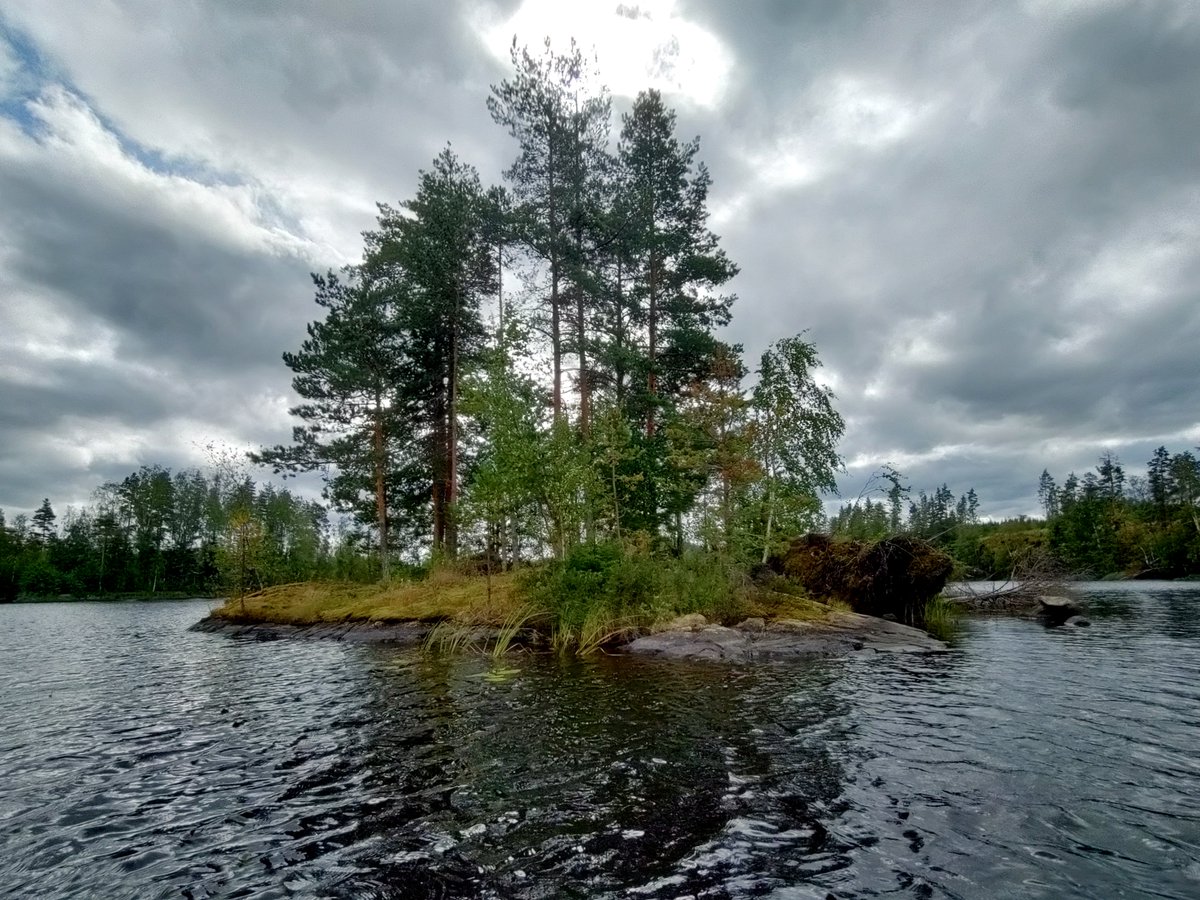
New peer-reviewed article by me, Timo Muhonen, @MinervaPiha, @jhrant & Jasse Tiilikkala about historical bear skull tree sites has been published in SKAS, the publication of the Society for Medieval Archaeology in Finland! It's in Finnish, so I will summarise it in this🧵1/16 

The importance of #bear in Finnish folklore is highlighted in the bear-hunt ritual. It included a feast with the removal of flesh and cleansing of the skull, which was ceremoniously nailed on a pine tree. 19th-C visitor accounts and folk poems describe several of these trees. 2/ 

Some folklorists have linked the trees with bear rituals and ancient beliefs of Finno-Ugric peoples. However, there are several issues that we address in our article. We did a survey of 10 sites that can be linked to skull trees based on place names and historical records. 3/16 

All sites are located on small islands. Islands had mythical and religious significance as places surrounded by water. They have sometimes been considered the centre of world myths in folk tales, and liminal spaces between the living and the dead. 4/16 

We couldn't find any #bones at the sites, and their preservation is questionable. According to historical accounts, bear bones were not usually buried. Rodents can quickly destroy bones left on the ground, and there are also accounts of people removing bones later. 5/16 

We found 18th–19th-C #coins at 3 sites. Some accounts say coins were placed in skulls during the ritual. Bear bones were powerful magical tools in folk beliefs, so it's also possible that they were redeemed by leaving a coin in their place when taking bones from the islands. 6/16 

Even though folklorists have suggested that bear skull trees are a remnant of prehistoric ritual practices, we argue that the skull tree ritual described in the historical sources cannot be older than a few centuries. When examining the bear skull tree sites, we have to... 7/16
...consider the settlement history in the vicinity as it gives a concrete indication of who could have practised the skull ritual and when. According to written descriptions, bear rituals were communal, so it is likely that they were performed in settlements or their vicinity. 8/
For example, Kieluvainen in Hirvensalmi is a small lake not located along water routes. Historical maps and tax records suggest that the settlement around it appears in the 17th century. Therefore, the use of Kieluvainen "Bearhead Island" is unlikely to predate this. 9/16 

We also have to consider hunting history. Many folk spells aim to keep bears away from livestock, and the damage caused by carnivores has been significant. Between 1848–1850, 62 horses, 480 cows, 248 sheep and 151 pigs were killed by beasts in the Mikkeli province. 10/16
Although most animals were killed by wolves,bears were hunted more. In the 1880s,66 bears &only 38 wolves were killed in the province. Carnivore damage is related to the development of forest grazing and increased numbers of livestock, which are both post-medieval phenomena here.
In 1647, a reward was set for killing harmful beasts. Four thalers were paid for a bear, and two for a wolf. It is reasonable to think that the highest reward encouraged the hunting of bears in greater numbers than before. 12/15
Attitudes towards forest animals have varied greatly. Wolves were often feared, but bears respected. Killing "the king of the forest" would have required exceptional symbolic justification. This could have led to the emergence of the skull tree rituals described in folklore. 13/
Lastly, the maximum age of pine trees in Finland is usually 200–300 years, so the trees mentioned by 19th-century visitors must have started growing at the turn of the 1500s and 1600s at the earliest. According to historical sources, an old tree was often chosen as a skull tree. 

There is no doubt that bear rituals have a long history. However, rituals change over time and take different forms. The skull ritual mentioned in historical sources and the place names connected to bear skull trees likely represent only the youngest layer of bear traditions. 15/
The article can be downloaded for free here: tuhat.helsinki.fi/ws/portalfiles…
#karhu #karhunpeijaiset #karhunkallomänty 16/16
#karhu #karhunpeijaiset #karhunkallomänty 16/16
• • •
Missing some Tweet in this thread? You can try to
force a refresh




